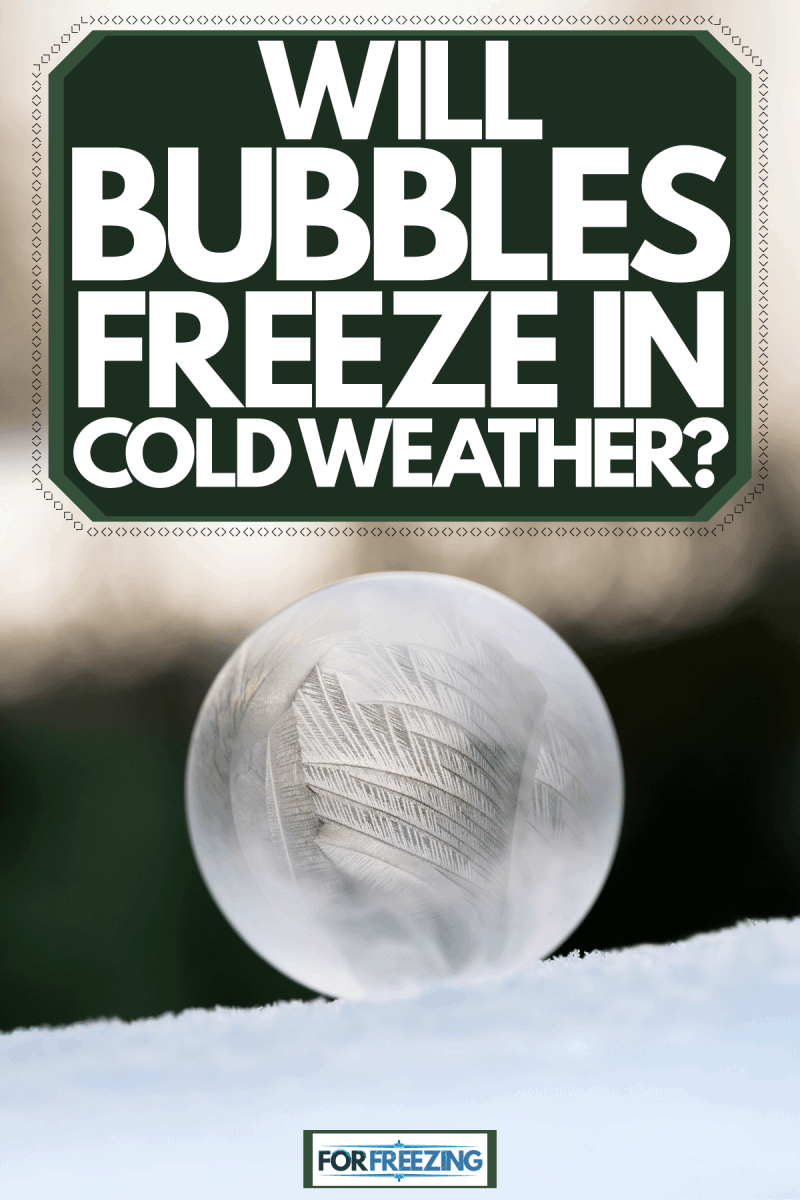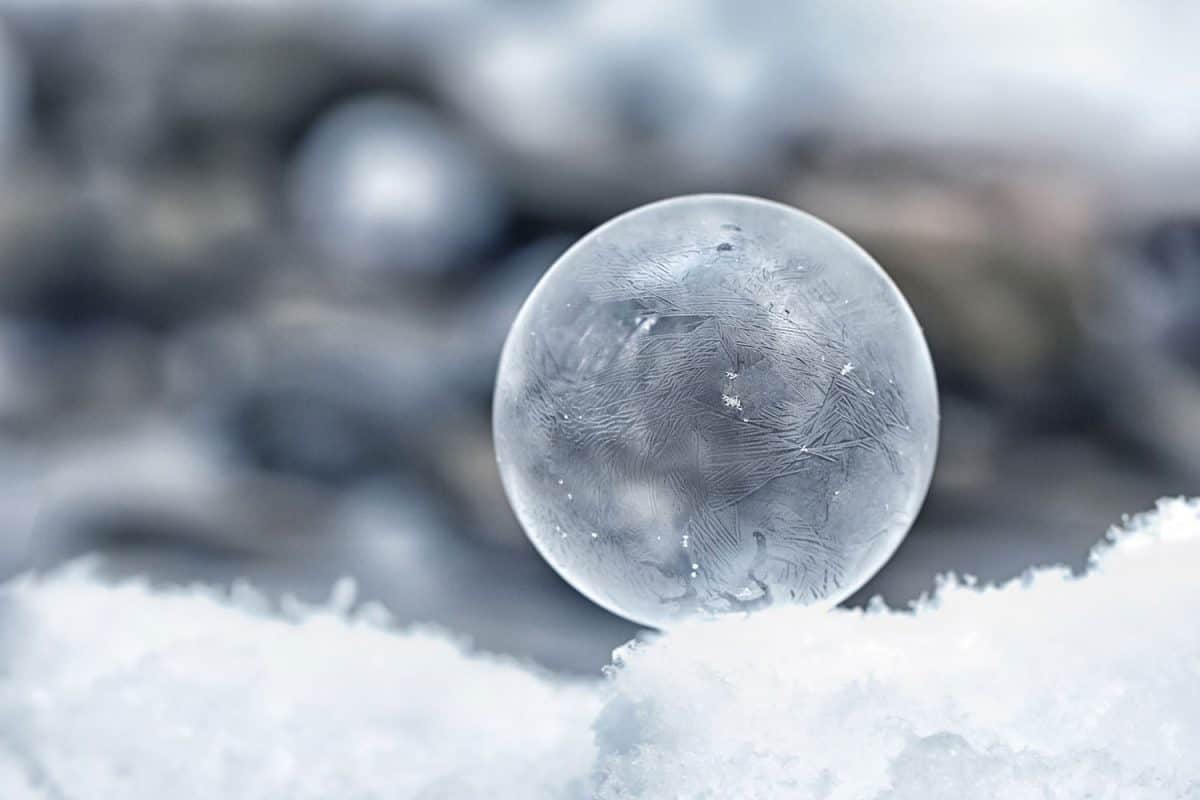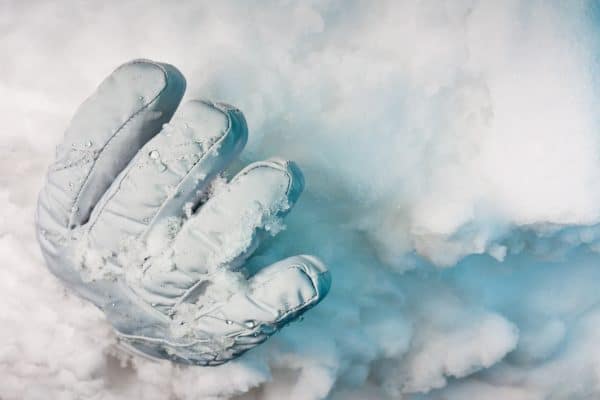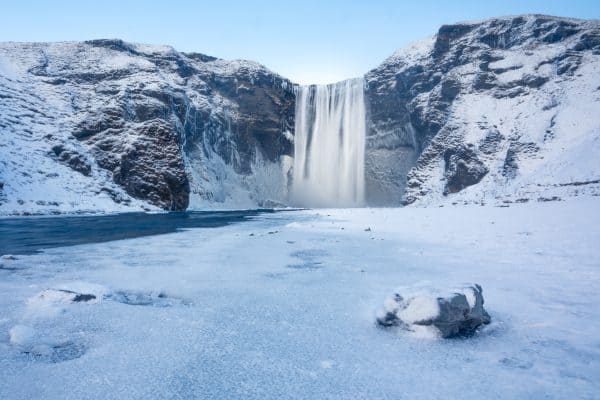A stream of bubbles is a sight to see. It excites not only children but even provides pets with a fun activity to pass time. It does not only give you a display of varying sizes but also of a myriad of colors coming to life, as light strikes the bubbles. However, often, they disappear as fast as they are formed. Could freezing extend the life of the bubble? We did our research and below is what we found out.
The water inside the thin bubble film evaporates slowly during cold weather that in prolonged exposure, bubbles have been observed to freeze. And while they start to freeze, it exhibits a snow globe effect—frost of different sizes and shapes moving on the surface of the bubble before it entirely freezes. Termed as the Marangoni Flow, the movement happens as molecules move from hot to cold at an interface. Water alone creates one solid frost font as it freezes but since bubbles form from a solution, the molecules present have varying freezing points leading to the phenomenon.
Before we discuss further, let's have a short refresher on some basic principles that govern how bubbles work.
NOTE: WE MAY GET A COMMISSION IF YOU DECIDE TO MAKE A PURCHASE THROUGH THESE LINKS. THERE'S ADDITIONAL NO COST TO YOU. CHECK THE BOTTOM OF THE PAGE FOR MORE INFORMATION.

How do Bubbles form?
A bubble is a globule that forms when one substance incorporates into another, usually gas in a liquid. The most common example being bubbles made from soapy water. In essence, a soap bubble forms when air is trapped inside a thin soapy film layer.
Soapy water has two components – soap and water. The chemical characteristics of soap having both a water-loving (hydrophilic) end and water-evading (hydrophobic) is responsible for creating the film. The hydrophilic ends form weak hydrogen bonds with water molecules present, in effect sandwiching the water inside the two layers of soap. The hydrophilic ends are seen inside while the hydrophobic ends are directed more to the surface since it tends to repel water.
Even if we start with different shapes, ultimately it settles into a spherical or globular shape. Given the quality of bonds present to maintain the film, a spherical shape requires the lowest amount of energy to maintain. A sphere is considered to have the lowest amount of surface area needed to bind any given volume.
Can You Freeze a Bubble in the Freezer?
It is possible to freeze a bubble in the freezer if the freezer temperature is below 9–12⁰ F. Bubbles can also freeze in slightly warmer temperatures, however, the ice crystals may not be as noticeable. Also, the bubbles may pop faster.
If you want to try it, you can use a commercially bought solution or make your own soap solution at home by combining dish soap and water. Some recommend the addition of glycerin or light corn syrup. Then use any wand available to create your bubble.
If you don’t have any bubble wand available, you can make one at home by twisting a piece of wire. You can start by making two unequal circles at each end and then folding them at a 90-degree angle in the opposite direction. The end form should be that the smaller circle rests directly on top of the bigger circle.
Place the homemade bubble wand on a flat surface, either a plate or a small tray. Choose one that you can place in the freezer. Use the smaller circle to blow your bubble. Wait for a few minutes for the bubbles to freeze. If you’re using other wands, make sure that you blow slowly into the wand and once the bubble is formed, place it as soon as it is formed in a slow, careful manner onto the cold surface.
Some tips to increase your success in freezing your bubble—make sure there is no wind when you start to make your bubble, prepare it a short distance from the freezer or if possible, with the set-up inside the freezer so that you recreate the natural conditions present during winter.
Why Do Soap Bubbles Pop?

Three factors that should balance so that soap bubbles do not burst are surface tension, internal pressure, and atmospheric pressure. Ideally, the pressure inside and outside the bubble should remain constant so that the film does not get disrupted. Or in cases where there is an imbalance of these pressures, the surface tension of the soapy film should remain constant across the whole sphere enough to overcome the pressures pushing against it.
However, in real life, this does not happen. Water is heavier than soap such that it gets pulled more to the bottom, leaving more soap molecules at the top of the bubble. This leads to unequal surface tension. Additional pressure from the atmosphere or from the gas inside causes the part with more soap to break, eventually busting the soap bubble.
Another factor that leads to bubbles bursting is the rate of water evaporation. Water evaporates faster when exposed to a higher temperature as higher temperature increases the energy inside the water molecule triggering faster movement. This facilitates water to transition from liquid to gaseous state. Loss of water molecules sandwiched in between the soap molecules in a bubble film lead to its disintegration.
How Do You Make Bubbles Last Longer?
Essentially, you can make bubbles last longer by ensuring that evaporation is arrested to increase the quality of the film produced from the soap solution. Another way to make them last longer is by changing their composition or lowering the temperature of the solution before using it.
By changing the composition, you bring in new molecules that can form more bonds thereby strengthening the hold of the film. Adding glycerin with sugar, or light corn syrup can do the trick. Basically, what happens is that additional hydrogen bonds with water. This link holds to the water component longer and thus able to maintain the bubble.
Chilling the solution before use can help to ensure that your bubbles last longer. Molecules tend to stay closer in the cold state as the energy in the molecule (kinetic energy) is low. Because the molecules are interacting more, it leads to more hydrogen bonds across all the molecules present, which in turn increases the surface tension.
Do Bubbles Last Longer in Hot or Cold Weather?

Bubbles will last longer in cold weather than in hot weather.
As mentioned earlier, factors that affect the bubble film are temperature, atmospheric pressure, the chemical composition of the solution, softness or hardness of water, and surface tension. Warmer days bring together with it higher temperature and higher atmospheric pressure. Both of which encourage faster water evaporation. The faster you lose water, the faster your bubbles burst.
The hardness or softness of water is determined by the amount of salts present in the water, mainly calcium and magnesium. Harder water has more of these salts dissolved in the water. When water has more calcium and magnesium present, these interact with soap to form whitish materials (aka 'scum'), which leads to fewer soap molecules being present.
Thus, if you want to keep your bubbles longer, make sure the temperature is colder and your bubbles are shielded from the wind.
In Summary
If you want your bubbles to stay longer, you may need to make them in colder temperatures. It can be done during winter or as an experiment at home. Start with a good soap solution that you can chill prior to making your bubbles. Temperatures lower than 9–12⁰ F are a good way to start so that you can appreciate the crystals forming. Make sure there is less wind when you make them so as not to disrupt the bubble while it freezes.



